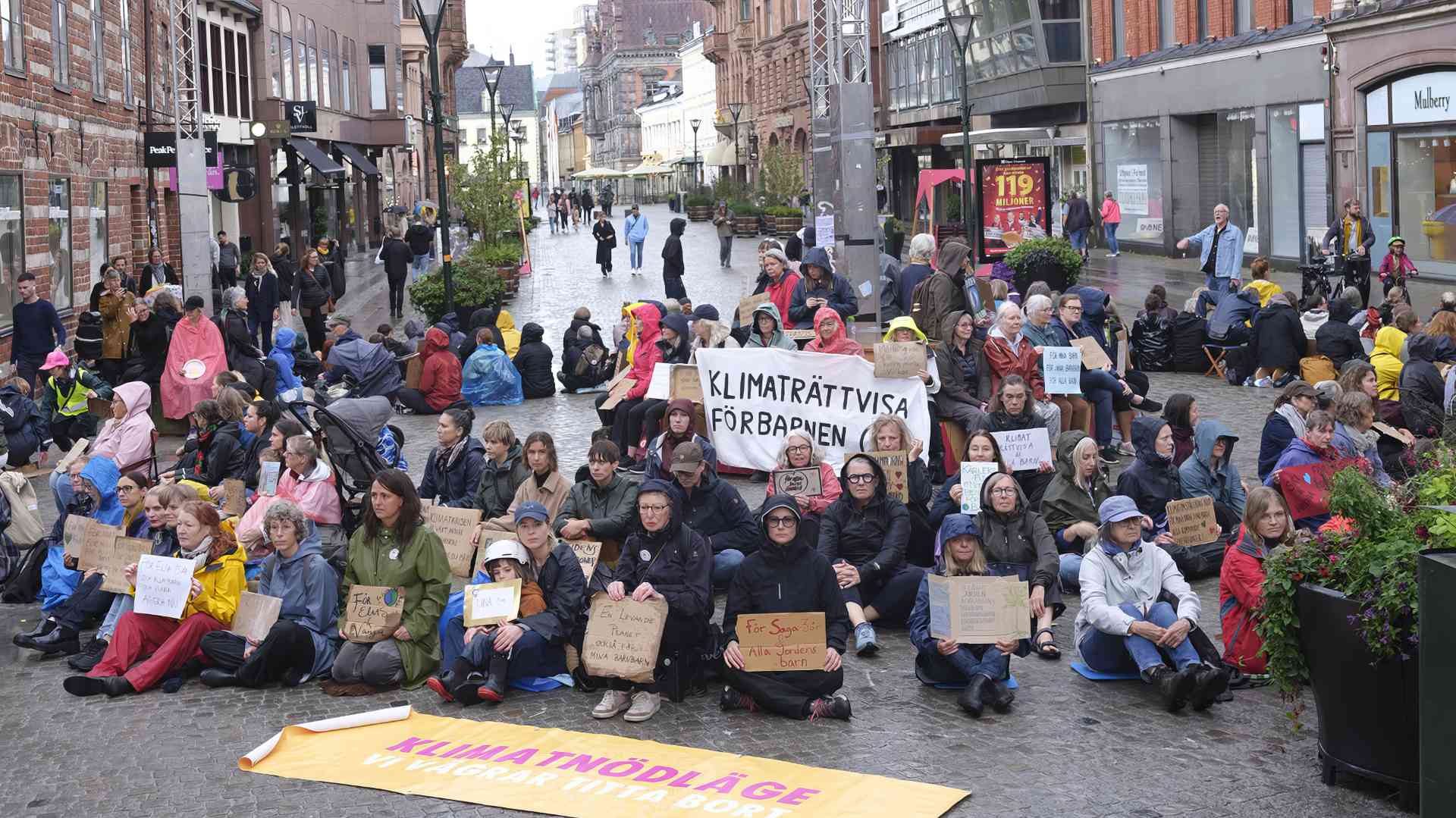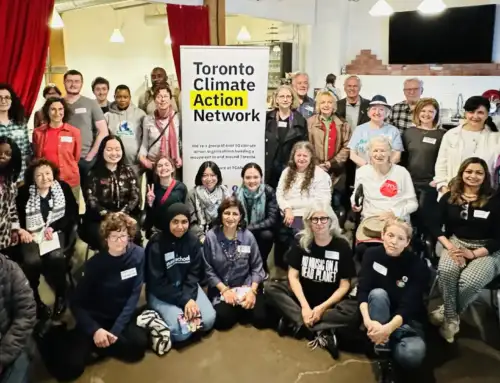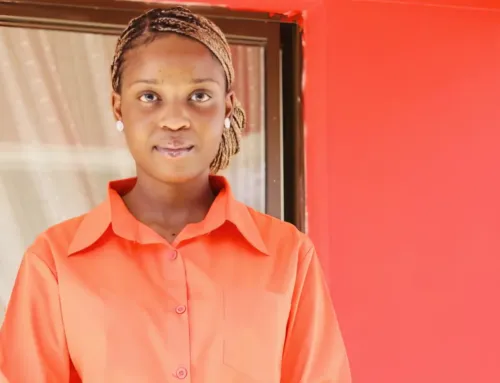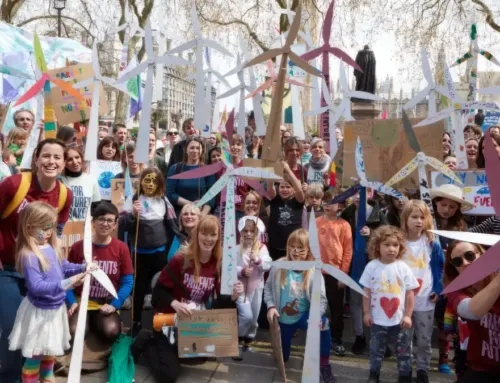STORIES
Mothers’ Rebellion Circles:
“Our children deserve to see us doing everything we can for their lives and future”
Sara Nilsson Lööv is a clinical psychologist, climate activist, and mother of two living in Malmö Sweden. The Mothers* Rebellion Circle Sara first led in September 2022 quickly caught on and circles are now happening in more than 25 countries. Sara now writes and speaks about climate activism and explores here how Mothers’ Rebellion Circles are harnessing the unique power of mothers to help disrupt public apathy and inspire action. November 18th, 2023 will mark the third global Mothers* Rebellion for climate justice.
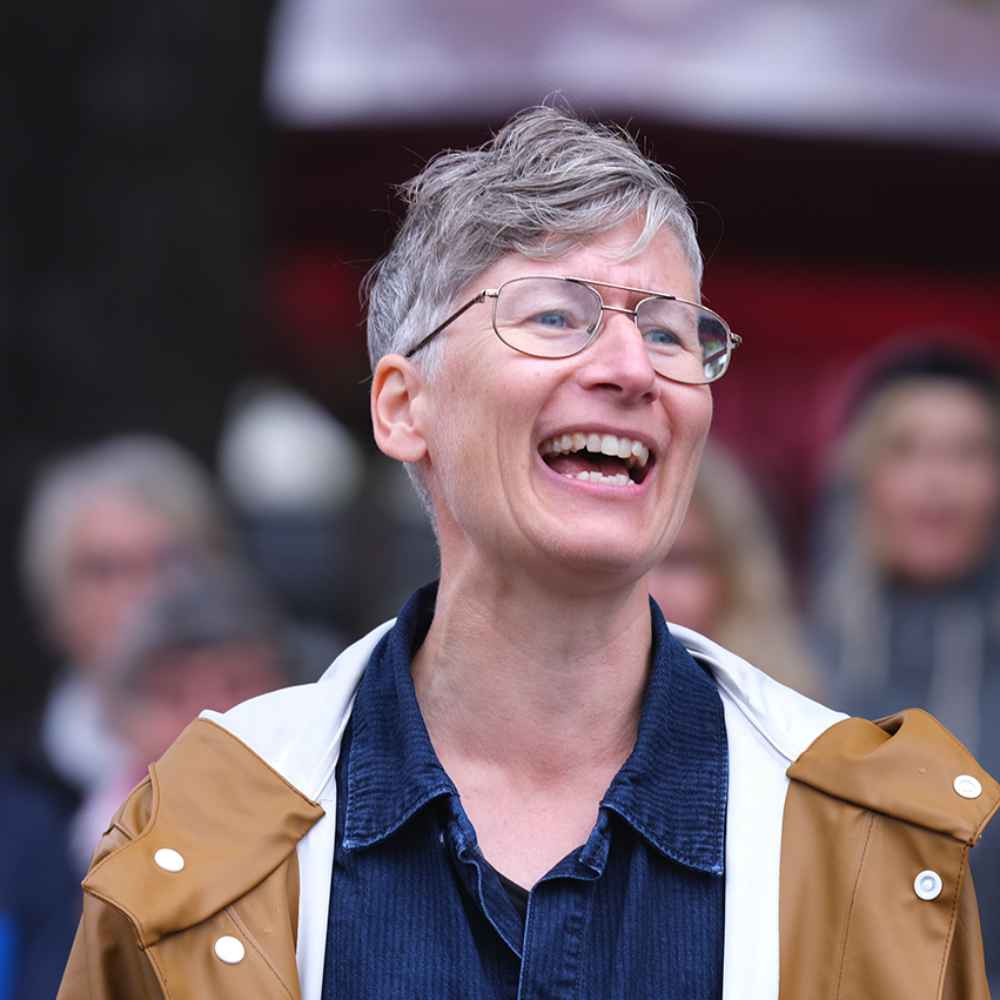
I used to feel that climate change had little to do with me. Then, in 2017, a colleague quit her job to work on the climate crisis, saying “Our children’s futures depend on how we respond now, and solutions aren’t happening at the political level.” That got my attention, so I read the Intergovernmental Panel on Climate Change report with its bleak descriptions of the future we’re hurtling toward. I suddenly understood for the first time that if we don’t change direction, there will be no safe place in the world for my children. My kids have always motivated me to action, so I joined Extinction Rebellion (XR) and began writing on social media, sharing my feelings and my knowledge of climate psychology.
After one protest, I lamented with another mother that the media portrays us only as “activists”. I identify as a mother and psychologist demanding climate action, and this othering of activists makes it a barrier for people to join. We decided to invite people to a bar to ask us anything and decide whether we’re nutty “activists” or ordinary people. Only mothers showed up. We talked about what mothers have accomplished historically, asking, “Could we do something powerful as mothers?” We kept meeting and called ourselves The Rebel Mums.
One day last summer, after hearing a moving climate song, I envisioned mothers placing our bodies and despair in the middle of a pedestrian street to make the climate crisis feel real. In Sweden, people usually either look away or give up, and I imagined banners saying, “We refuse to look away. We refuse to give up.” The Rebel Mums helped refine this idea and 70 mothers and grandmothers conducted a circle in Stockholm.
We held signs with our children’s names as the song played or mothers spoke about why they were there. Sitting there together, we could really feel the weight of the climate crisis and many of us started crying. Some passersby cried watching us. The Red Rebels – a silent, slow-moving theater group dressed in red with white-painted faces —arrived and bowed to us. I felt they saw straight into my heart, into my pain. Others felt that, too, and cried more. People watching our livestream cried. We ended by marching to a public square, holding our banners, and chanting loudly, “Mothers gonna rise like the water, gonna face this crisis now!” Many mothers, feeling energized, said, “I need to do this again” and started planning. We teamed up online with mothers in the U.S. Uganda, Zambia, and Germany who had the same vision of organizing as mothers, and it spread rapidly. There were 80 circles worldwide in September.
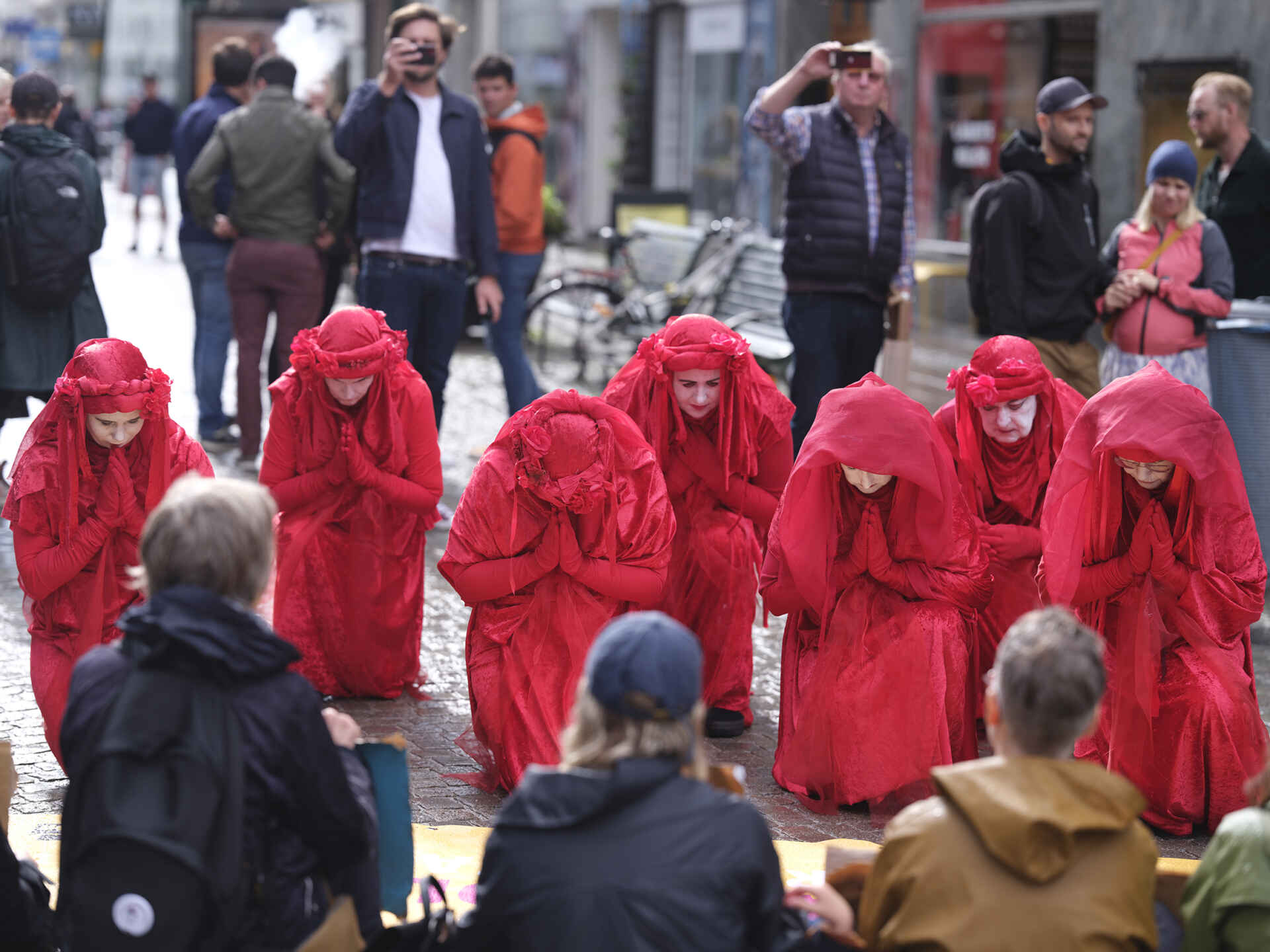
Several things help these circles succeed. First, it’s an easier way for mothers to protest than marching in a crowd while managing children. We also don’t risk getting arrested or angering people the way XR actions can. Circles are easy to organize because people just show up and it doesn’t take many to have impact. Even if your circle is small, you know others are happening worldwide and feel part of something bigger. The photos are visually compelling on social media because they capture the business-as-usual scene that the circle of sitting mothers is silently disrupting. Businesses-as-usual often requires moving, so it’s powerful to say, “I won’t do that anymore. I’ll sit here and feel my grief.” The sitting itself is also part of the success because it feels vulnerable, but lets us turn inward, which is calming.
We use the mother’s perspective because many of us feel compelled to act for the sake of children, but also because it’s strategic. This crisis can feel abstract, so when action is only framed as doing something “for the climate” or “environment”, few people feel it’s connected to them. Acting as mothers communicates that this crisis impacts us, our children, those we love most. Mothers who previously felt, “I’m not an ‘activist’, I won’t join a protest,” often now feel, “I’m a mother, I should be there too.”
Some people identifying in some way as queer have said, “I’m not totally comfortable with this. I identify more as a parent than a mother.” In some ways that’s true for me, too, as a queer lesbian activist. I explain that we’re using the power of the mother position because it works. My wife is a gender researcher, so we’ve often discussed this. She proposes “mothering” as a verb, something even men can do. We try to be inclusive and tell people, “You don’t need to identify as a mother or woman. Everyone can sit here, but it is in some way as a mother.”
In some countries, men join the circles. In Sweden, though, we noticed that women-only circles are more disruptive because they tap into historical associations of mothers willing to do anything to defend their children. We’re part of XR, yet separate, and don’t receive the same kind of criticism it does because it’s hard to dismiss a mother’s love.
Often people say, “Children are our hope,” but we offer a counter-narrative: We cannot burden children with the climate emergency. We are the adults. We should act. It’s uncommon in Swedish circles to include children because we want to show them that adults are taking care of this. Circles can also become emotional, and in our culture adults try to avoid expressing intense emotions in front of children.
One of our goals in Sweden is to activate worried but passive people, and I’m often asked about hope. I try to help adults focus less on ourselves and our experience of hope and more on our children. Sure, if I feel hope, I find strength in it, but more importantly, my children deserve to see me doing everything I can to protect them from catastrophe. I’m not sure what world I can give them, but I can give them my efforts.
The beauty of this global movement is that we share overarching goals — a sustainable present and future for current and future generations – but every circle prioritizes its local context, goals, and messaging. For example, one circle in Zimbabwe recently faced inward so the mothers could discuss ways to manage flooding and drought in their region.
I’m excited that my vision of last summer has become a central part of a movement. It feels surreal. At the start, fear drove my organizing. Now, joy and meaning drive it. I like this work and that my children witness my efforts. My seven-year-old recently asked, “How will it be in the future when most mothers are Rebel Mums? When you speak, everyone in the world can hear what you’re saying. What can happen then?” His vision of the future is of a huge, global rebellion of mothers able to change anything.


